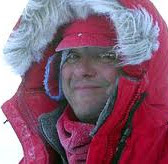Just the Facts, M'am: The Historian's (Even Minimalistic) Role in Our Current Media Age

The historian of technology, Thomas Haigh , has written an interesting piece on the role of historians in an environment of blogs and speedy news production. He discusses his experience trying to bring the historian's perspective to the controversy surrounding the so-called "inventor of email," V.A. Shiva Ayyadurai. Mr. Ayyadurai Looking So Very Dapper On the one hand, I am struck by the grimness of Haigh's experience, and the near nihilism of his hopes. We aren't talking about bringing "critical perspectives" or what have you to bear here; we're just talking about getting the facts right--even that is so hard. And, sure, facts are value-laden and norm-y, yada, yada. But can we hope for some minimalistic ethos of research? On the other hand, Haigh is fighting the good fight, and his experience, though frustrating for all, still encourages us to press on. Link to Haigh's article: http://cacm.acm.org/magazines/2012/9/154586-seven-lessons-from-b






